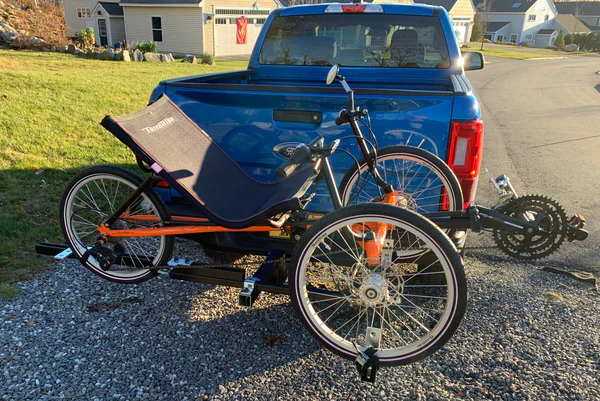If you and your riding partner want to do more than going out on rides on two separate bicycles, a tandem bike presents the perfect way to ride in true unison. With the ability to accommodate two people (or more in some models), riding a tandem can be a great way to gain a new experience from routes familiar or new to you.
But before you set off with your riding partner for a ride, there are some things you should be aware of when riding a tandem bicycle. These types of bikes require a lot of coordination and communication between the two riders, and if you can make it work, it can be a lot of fun. Otherwise, riding a tandem could be an invitation to a bad crash or fall. This article will present some helpful tips so that you can have a safe ride.
# Captain Gets on The Bike First
When you get ready to hop on to your tandem, let the captain (the person sitting in the front) get on first. This is necessary because our regular motion for hopping on to a bike is by swinging your leg backwards and over the frame. If the stoker (person at the back) gets on the bike first, the captain will not have space to swing their leg over the bike.
# Stoker Should Follow
Once the captain securely mounts on the tandem, the stoker can now follow. It is important to remember that once the stoker mounts on the seat, they are airborne with their feet resting on the rear pedals. Movements, especially side to side motions can easily make the stoker feel uncomfortable and even rock them out of balance. The captain should straddle the bike, holding it securely and avoid making awkward and jerky movements.
# Getting Ready to Pedal
When riding a tandem, the captain takes charge of all the controls including handling, braking, shifting gears, slowing down, and taking off. So the captain will decide which foot to start off pedaling and set the pedal accordingly. During this, it is important for the stoker not to resist the motion of the pedal and adjust accordingly by backpedaling.
# Setting Off
As mentioned, communication and coordination are key when riding a tandem bicycle. There are four essential commands used to facilitate these two factors which are – on, off, bump, and shift. When either side of the pedal is in the power position as decided by the captain, an ‘On’ command is a cue to start pedaling. The stoker should start turning the pedals as soon as the command is given and the captain will follow immediately.
# Slowing Down
Stopping in a tandem can be a little tricky. The captain should first give an ‘Off’ command to signal the stoker to stop pedaling. As the brakes are applied and the bicycle slows down, the captain will remove the foot he or she is more comfortable with from the pedal and use it to pivot the bike as it stops. The stoker should remain seated with feet placed on the pedals until the captain firmly straddles the tandem.
# Calling Out Bumps
The stoker has little vision of what’s ahead when riding a tandem, so it’s important for the captain to call out for things that need to be aware of. Riding over bumps and uneven surfaces unknowingly can be uncomfortable particularly for the stoker. The captain should always give a heads up of things a head to prevent hard landing while riding over surfaces.
# Shifting Gears
Shifting the gears while the chain is underload can be detrimental. To ensure smooth shifting while there is least tension on the chain, the captain should give the ‘shift’ command to get the stoker pedaling a little softly.
Conclusion
While a tandem has many similarities with regular bicycles, it takes some getting used to to ride the bike safely and smoothly. Work on your communication and coordination with your partner so that you become familiar with the unique steps involved.
If you need a 2-bike rack for RV to carry your tandem, Cycle Simplex has a variety of different bike racks. Contact them to check out their collection and place your order.

